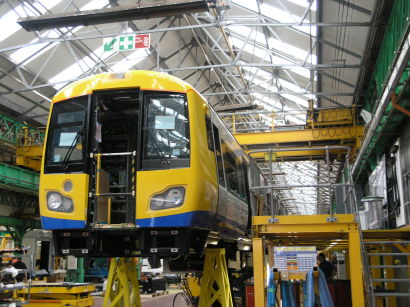LONDON OVERGROUND is to have its fleet enlarged after Transport for London approved a £320 million scheme for five-car trains in accordance with its current Business Plan. The first longer trains are due to enter service on the East London Line by December 2014, with all other routes gaining five-car units within the following 12 months.
A total of 57 extra cars will be needed to extend the current fleet.
Some additional five-car trains may also be ordered, but a TfL spokesman told Railnews no decision has yet been taken about the number of extra units.
A Bombardier spokesman confirmed that talks would now take place with a view to reaching commercial close. He said it was ‘a positive development for Bombardier, and the company looked forward to supporting its customer’.
Discussions about more trains and vehicles have already been taking place with Bombardier in Derby, which built the present Class 378 fleet a few years ago, and also with the Overground ROSCo, QW Leasing.
The additional investment is going ahead because Overground passenger figures are rising sharply and are projected to increase by another 25 per cent within a decade.
A report approved by TfL’s Finance and Policy Committee and then the main Board said: ‘Extra capacity (longer and more frequent trains) has already been provided, as the level of growth is in line with forecasts, but there is now severe overcrowding on some sections of the network at peak times. Demand is forecast to increase by a further 25 per cent on the existing Overground network by 2021, based on population and employment projections in the London Plan. If left unaddressed, widespread severe overcrowding is expected to occur.’
Upgrades in the £320 million plan include additional stabling at Silwood Triangle and Willesden, reconfiguration of the depots at New Cross Gate and Willesden, and the lengthening of turnback sidings to accommodate five-car trains.
The five-car plan may only be the first stage in developing the Overground fleet. The report goes on to say: 'It may be desirable to provide further additional capacity by the mid 2020s and this ties in with both the end of the current rolling stock lease arrangements and potential changes connected with High Speed 2.
‘Where reasonably practical, provision is being made to accommodate six car trains. It should be understood that even if the five car trains ultimately become as full as current four car trains the benefits of five car are not “lost”; the trains are still carrying 25 per cent more passengers than they would as four car units.’


